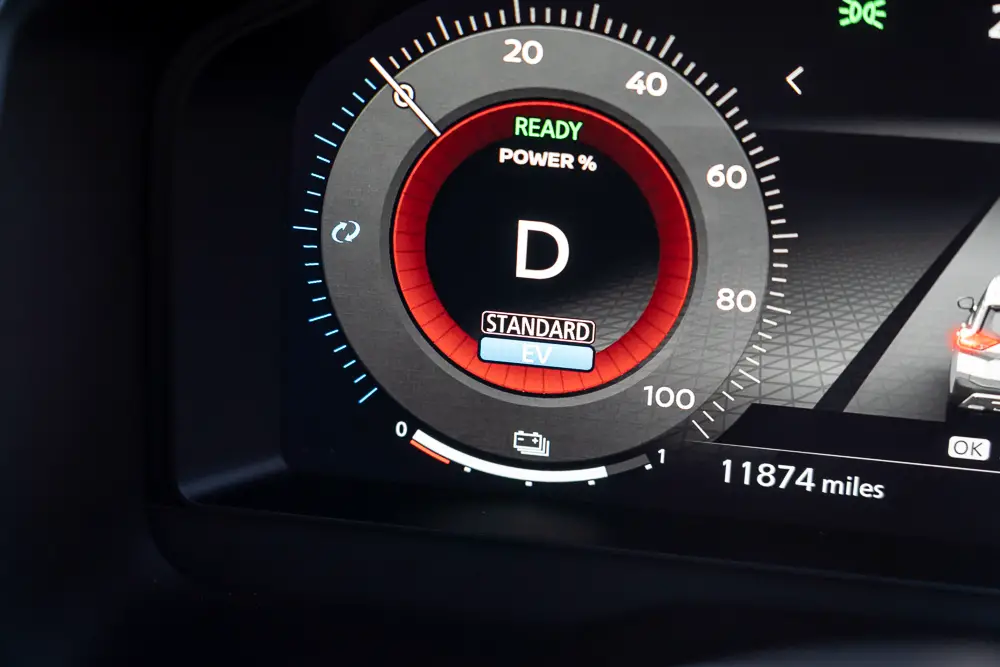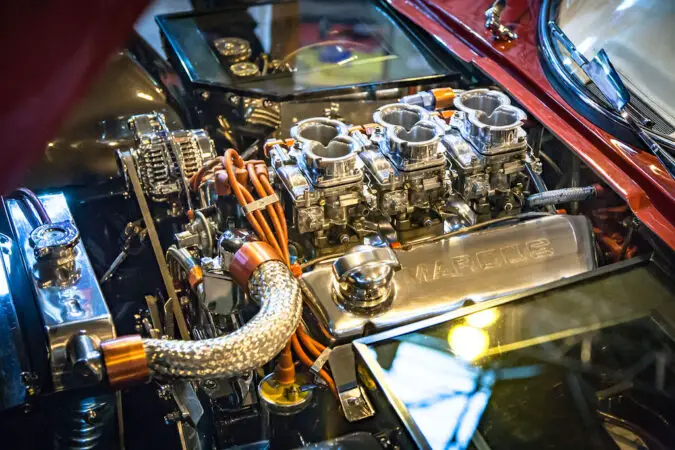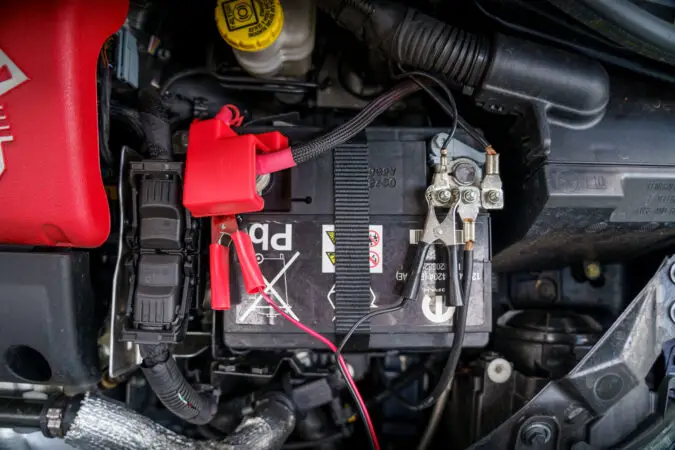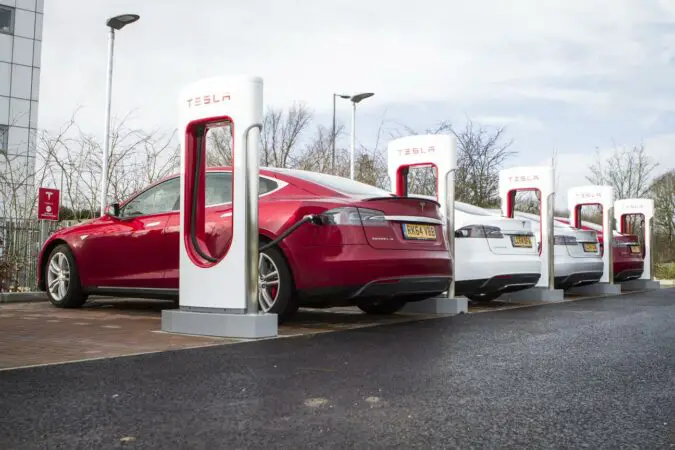In the early days of motoring, engines were more fragile than they are today. This meant that owners needed to follow some extra steps in order to keep their vehicles running well. Warming up the engines is one such activity. However, engines have come a long way since then. So, do you have to warm up your car even today? Or is that a thing of the past? If you are curious about this question, you have come to the right place.
- What Is A Carburetor
- Should You Warm Up Your Car
- Warming Up In The Summer
- How Long To Warm Up
- Conclusion
- FAQS
Warming up cars before driving them used to be a common practice in the past. However, this way mainly due to the use of carburetors. But, this component is not even used in the cheapest cars today. All this might seem a bit complex for you. Don’t worry! We are here for you. In this article, we will tell you everything you need to know about warming up engines. With that out of the way, let’s begin our discussion.
What Is A Carburetor
Before answering the question “do you have to warm up your car?”, we need to understand the inner workings of the carburetor (to find out more, check out our insight on how to clean carburetor and how to tune a carburetor). Although this technology is rarely used now, it is where the concept of warming up a car came from.
The main function of the carburetor is supplying the fuel-air mixture needed for the internal combustion of an engine. A carburetor contains a number of different components. These can be listed as,
- Liquid Fuel Storage Chamber
- The Choke
- Idling Jet
- Main Jet
- Air Flow Restriction
- Accelerator Pump
All these components work together to add the correct amount of fuel to the air being sucked into the engine. This mixture has to be exactly correct to achieve optimum combustion. Samuel Morey invented the carburetor in 1826, and it lived on as an important part of an engine until the early 90s.
During the peak of their popularity, several types of carburetors were used in motor cars. Let’s take a brief look at them.
Types Of Carburetors #1 – Up-Draft Carburetors
In an updraft carburetor, the air entered from the bottom. Then, it mixes with the fuel and exits from the top. In other words, the air flows in an upward direction. This was the first type of carburetor used in vehicles. Sometimes, a drip collector may be needed by updraft carburetors.
Types Of Carburetors #2 – Down-Draft Carburetors
Here, the air flows in the opposite direction relative to updraft carburetors. Not only that, downdraft carburetors work with lower air velocities. This is due to the assistance of gravity in the fuel-air mixture flow. This type is best suited for engines with high power outputs.
Types Of Carburetors #3 – Horizontal Type Carburetors
Sometimes, the engine bay of a vehicle can be too cramped to fit the above-mentioned types of carburetors. That is where horizontal-type carburetors come into play. Here, the jet tube of the carburetor is placed in a horizontal direction. Not only that, because of the elimination of the right-angled intake area mechanism, the resistance of the fuel-air mixture is also reduced.
All these different types of carburetors had one thing in common. They needed to be warmed up, especially during a cold start. But, what exactly is a cold start? Follow along to the next section and find out for yourself!
Cold Start Cars
If you want the exact answer to “do you have to warm up your car?”, you need to know about cold starts. In the simplest of terms, a cold start is when the engine isn’t at the optimum operating temperature. This happens when the vehicle has been sitting for a long time without being started.
During a cold start, the vehicle idles at a higher RPM range than what is normal. However, you shouldn’t be worried about this at all. It is completely normal. A cold start ensures that all internal components are properly lubricated before use.
The typical RPM range during a cold start is between 1000 – 1500 RPM. This will slowly decrease once the engine warms up. But, the engine not returning to normal idle once it warms up can be a bad sign. This indicates that there is some issue with the engine, and you should get it checked immediately.
There are several benefits of a cold start. It allows the engine oil inside the engine to warm up. When an engine sits, the oil settles at the bottom of it. This can be harmful once the engine starts back up again. As we mentioned earlier, a cold start gets this oil heated and pumping up again. Not only that, warming up the engine through a cold start thins out higher viscosity oils, leading to a better flow inside the engine.
Cars Not Starting In Cold
Several factors can cause your car not to start in cold temperatures. Here, we will inform you about some of the most common culprits.
1. Carburetor Issues
Carburetors encounter several issues in cold temperatures. Ice formed due to the cold can clog the nozzles of the carburetor. This cuts off the fuel-air mixture reaching the engine, causing it not to start. However, modern cars with fuel injection are not affected by this issue, as they don’t use carburetors.
2. Battery Problems
One of the main causes of cars not starting in cold is the battery. A whining noise coming from the engine when turning the key is a clear indication of a dead battery. Lights not turning on, warning lights on the dashboard and the engine not turning over are the other indications of a flat battery.
Batteries have a tendency to drain during cold temperatures. This is due to the cold affecting the internals of the battery. It can disrupt the chemical process happening inside, and reduce the battery’s ability to properly hold a charge.
Parking the vehicle indoors where it is not affected by the cold is the easiest way to prevent battery-related issues during the cold. Other than that, replacing an older battery with a new one is a viable solution for this issue as well.
3. Issues With The Alternator
The alternator is responsible for charging the car battery while the engine is running. However, the cold can mess with the alternator as well. Flickering interior and exterior lights are the main indications of a faulty alternator. Replacing the alternator is the only fix for this issue.
4. Faulty Starter Motor
If your car makes a clicking sound when you turn the key, it is suffering from a faulty starter motor. In this case, you will have to replace the whole starter motor assembly.
Most of these issues can be minimized by simply parking your vehicle in an area where it doesn’t get too cold. But, what about warming up? Do you have to warm up your car to prevent these issues? In the next section, we will take a deeper dive into this question.
Should You Warm Up Your Car
Warming up a car simply refers to the process of letting the car idle for several minutes before starting off on your journey. Nonetheless, many people argue against warming up modern cars. However, the need to warm up a car mainly depends on the technology used within it. After going through this section, you will have a clear answer to the question “do you have to warm up your car?”
Do You Have To Warm Up Your Car #1 – Older Cars
Until the mid-1990s, most cars had carbureted engines. If your car falls into this category, then you have to warm up the car before setting off on a journey. This is mainly due to the fragile nature of the carburetor itself.
When a carbureted engine is first started up, there is a risk of the engine getting choked. In return, the engine can run a fuel-rich mixture, affecting its performance. But once the engine gets warmed up, the function of the carburetor returns to normal.
In these older engines, the fuel-air mixture is carried to the engine through an intake manifold. However, when the engine is cold, fuel could pool inside it. This is what causes the engine to run a fuel-rich mixture. However, once the engine gets warmed up, this pooled-up fuel gets evaporated.
Running a fuel-rich mixture can cause harm to the engine of your vehicle. Not only that, this can cause the engine to stall and run rough. Warming up your carbureted car for a few minutes can solve this issue easily.
Do You Have To Warm Up Your Car #2 – Cars With Electronic Fuel Injection
Electronic fuel injection has replaced the use of carburetors in modern vehicles. Here, the fuel-air mixture is done through the use of sensors. These sensors are controlled through the car’s computers, and it is a highly sophisticated system. So, these engines do not require warming up in order to achieve their optimal performance.
In fact, letting the engine warm-up can have a negative effect on modern vehicles You see, these engines with electronic fuel injection heat up the engine by pumping more gasoline into the cylinders. If you leave your car to warm up for a long period of time, an excessive amount of gasoline will get pumped inside the engine. Sometimes, this gasoline can get in contact with the cylinder walls. This in return can wash off the engine oil from the cylinder walls, leading to engine damage.
Not only that, letting a car with electronic fuel injection warm-up for a long time can damage other components of the engine as well. Piston rings and cylinder liners are some of the most vulnerable components that get damaged. The same is applicable to diesel engines as well.
So, if you are the owner of a modern vehicle with electronic fuel injection, the answer to the question “do you have to warm up your car?” is simple. No, you don’t!
Do You Have To Warm Up Your Car #3 – Electric Cars
Yes, you read that right! It shouldn’t surprise you when we say that electric cars are taking over the world. The likes of Tesla, Rivian, and even mainstream car manufacturers like Mercedes have popularized electric cars among the general public. So, we thought it would be best if we included electric cars in our discussion as well. But wait, let me throw another surprise at you! Against all odds, manufacturers recommend the warming up of electric cars.
Well, this process isn’t warming up in the traditional sense. Instead, it is called preheating. This process is recommended for plug-in hybrid vehicles as well.
Preheating should be done while the vehicle is connected to wall power. This can help in saving the battery capacity as well as in maintaining heat inside the cabin.
There are some other benefits of preheating an electric vehicle as well. It can prepare the battery for longer drives, and increase the range in colder climates. As these vehicles have built-in thermal management technologies, pre-heating does not cause any harm to them.
Should I Warm Up My Car In The Summer
So far, we talked about warming up a vehicle during the winter. But what about the summertime? Well, it is not necessary to warm up your car during the summer. Modern technology allows the engine to automatically heat up in a short amount of time.
Warming up your car in the summer can be a disadvantage on some occasions. As we mentioned previously, it can be harmful to the engine. Not only that, it can have financial implications as well. Letting the car warm up for a long period of time is a wastage of fuel. In fact, the EPA estimates that fuel wastage is close to half a gallon every hour.
Letting the vehicle warm up for an excessive period of time is harmful to the environment too. Up to one pound of harmful carbon dioxide gas gets emitted to the environment during just 10 minutes of warming up. Older vehicles are the most harmful to the environment, as their fuel-air mixture is not optimized. In short, you should not worry about warming up your car during the summer.
Car Engine Not Warming Up
A number of reasons can cause your engine to not warm up as intended. Bad fuel economy, limited engine performance, and low readings in the temperature gauge are all indications of an engine that is running cold. The most common causes of this issue are,
- Faulty Coolant Temperature Sensor
- Broken Thermostat
- Locked Fan Clutch
1. Faulty Coolant Temperature Sensor
The engine coolant temperature sensor is one of the main components in the cooling system of modern vehicles. It is responsible for the operation of the thermostatic switch that operates the electric fans of the vehicle.
Issues with its sensor cause the electric fans to operate without stopping. In return, the engine gets cooled down more than recommended, preventing it from warming up. A faulty coolant temperature sensor can be easily diagnosed with the use of an ohmmeter.
2. Broken Thermostat
Controlling the coolant flow between the radiator and the engine is the main responsibility of the thermostat. However, sometimes it can get stuck open. This causes coolant to continuously flow to the engine, cooling it down in the process.
To locate a broken thermostat, you can use either a digital thermometer or an infrared thermometer. Another way to identify a broken thermostat is by submerging it in boiling water. Nonetheless, faulty thermostats should be replaced as soon as possible to prevent damage to the engine.
3. Locked Fan Clutch
Some vehicles have engine-powered fans instead of electric fans. Typically, these fans are operated with the use of a thermostatic fan clutch. On rare occasions, the spring lock of this fan clutch can fail. In return, the fan will continuously blow cold air to the engine. This issue can only be fixed by replacing the whole fan assembly.
Starting Car In Extreme Cold Weather
There can be situations where a car is simply too cold to start in the normal way. Operating your vehicle under these freezing conditions can be a bit tricky. In situations like this, you can follow the below steps to set off in a safe manner.
Manufacturers recommend letting the engine idle for a few seconds in extreme cold weather conditions. This allows the engine to build up oil pressure. Until it does so, you can clear up the snow on top of your vehicle. Turning on the defroster is also recommended in these situations. It can prevent ice buildup on the windows of your vehicle.
After you set off, we recommend taking it easy for the first few minutes of driving. This prevents unnecessary strain on the engine components. Once the engine is up to temperature, you can unleash the full performance of your vehicle without any concern.
How Long Do You Have To Warm Up Your Car?
For a well-maintained engine, it shouldn’t take more than 30 seconds to warm up properly. However, you should refrain from accelerating the engine during this time period. Some modern cars come with a changing redline which increases as the engine warms up.
Other than that, you can use the temperature gauge on your dashboard to determine the amount of time as well. When the vehicle is turned on, the needle of this gauge slowly starts to move from C to H. When it is in the middle, the engine has reached the optimum temperature.
Car Engine Warm-Up Facts
- Letting a car warm up before driving is a common practice during cold weather, but it’s not necessary to let the engine run longer beyond warming the cabin and defogging the windshield.
- Consumer Reports’ chief mechanic recommends letting the engine run for a minute before driving on a cold day, and there’s no need to let it run longer.
- Letting the engine idle for an extended period is a waste of fuel and generates emissions, which is a downside of letting the car warm up.
- Modern engines are fully lubricated within 20 to 30 seconds, making the practice of warming up the engine for a longer period unnecessary.
- Routine maintenance and allowing the engine to lubricate can help most modern engines last 200,000 miles or more.
- Starting the engine for a split second in older engines when they were somewhat dry and not lubricated with oil was once considered the worst thing you could do for the motor.
- Cold engines idle at 1,200 rpm or more, quickly lubricating all necessary moving engine components.
- The fastest way to warm up an engine during winter is by driving, and it’s not necessary to idle the car for 20 minutes or longer to get everything, including the cabin, really warm.
- Drivers should not rev the engine hard for the first few minutes of driving until they see the temperature gauge move off the cold reading.
- Driving the car is the most efficient way to warm up the engine and get it to a comfortable temperature in just a few minutes, compared to extended idling, which wastes gas.
Conclusion For Do You Have To Warm Up Your Car
With this article, our goal was to give you a de facto answer to the question “do you need to warm up your car?”. This is a concept mostly associated with old, carbureted engines. If you own a modern car with electronic fuel injection, you shouldn’t have to worry about warming up. As it causes more harm than good, we advise you to refrain from warming up your vehicle for more than a few seconds. However, electric car owners can gain some benefits by preheating their vehicles.
FAQS On Do You Have To Warm Up Your Car
Here are some popular FAQs:
How Long Should You Let Your Car Warm Up
Cars with electronic fuel injection don’t need to be warmed up for a long time. Typically, warming up the engine for 30 seconds is sufficient. Letting the vehicle warm up for an extended amount of time can damage the internal components of the engine. Not only that, it increases carbon dioxide emissions while also reducing the fuel economy.
Is Idling Your Car Bad
Letting your car idle for a long period of time has a number of disadvantages. First of all, it produces fumes which are harmful to you. Idling for too long can also damage the exhaust system of your vehicle. In some parts of the world, you will be fined by the police if you let your car idle for an extended period of time.
Does AC Waste Gas
The AC system is operated through the alternator. In order to run the alternator, the engine has to use fuel. In stop-and-go traffic situations, the AC can waste gas. However, using the AC can be efficient at cruising speeds. External factors like temperature also have an effect on the gas consumption of the AC.
What Is A Cold Start
Starting the engine of a vehicle when it is under the optimal temperature is known as a cold start. After a cold start, you may have to let your vehicle warm up for a short amount of time. However, accelerating hard after a cold start can severely damage the engine of your vehicle.
How Long Can A Car Sit Without Being Driven
Letting a car sit for a long period of time can damage its critical components. If a vehicle sits for a long time, the battery can die within two to three months. Flat spots on the tires begin to form after the vehicle has been idle for at least a month. Other than that, rust and oxidation can appear on the exterior of the vehicle after a few months as well. All in all, a car can only sit for a few months without being driven. After that period has passed, it starts to encounter damages internally as well as externally.





